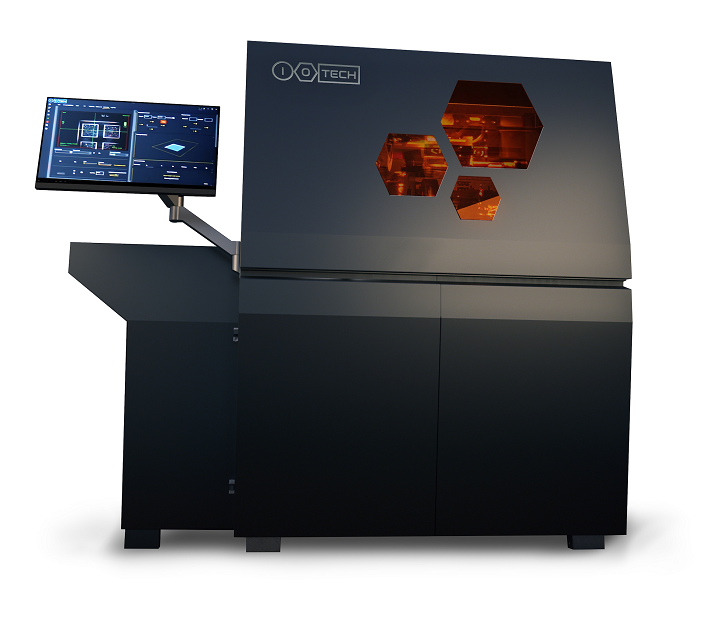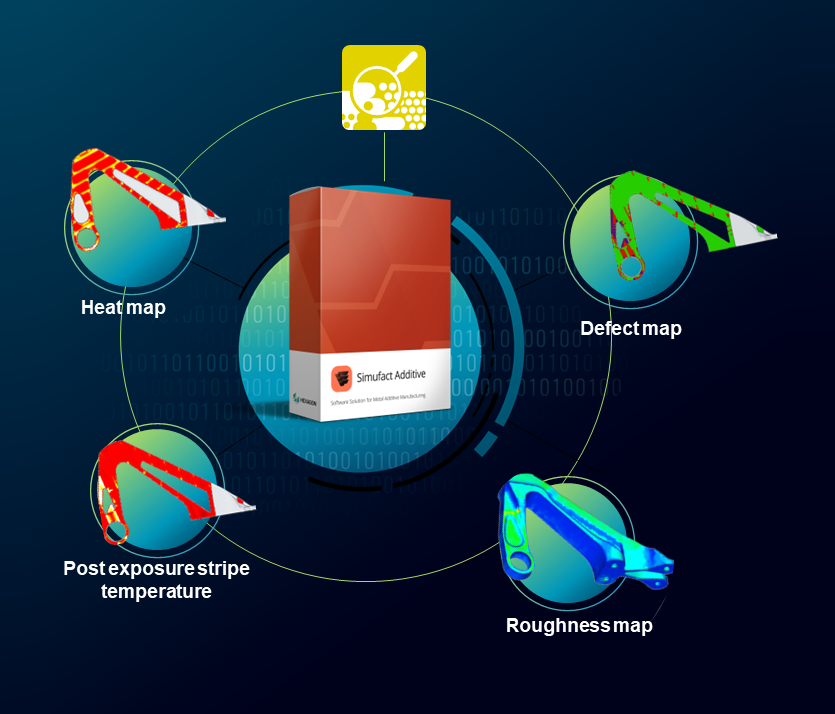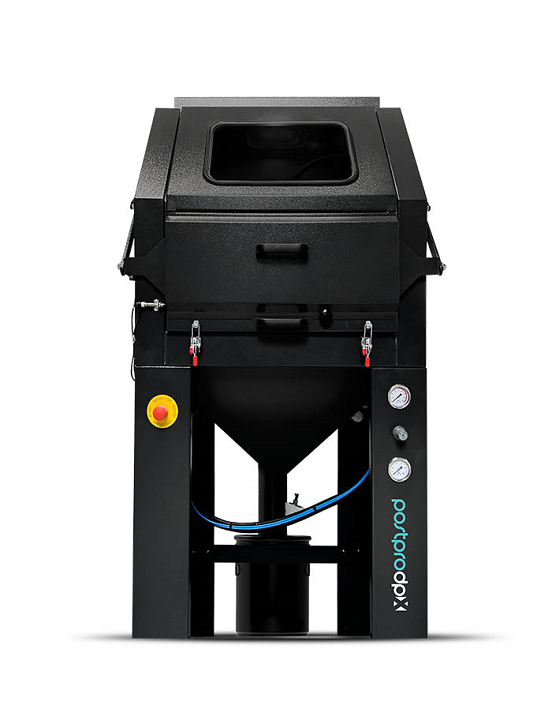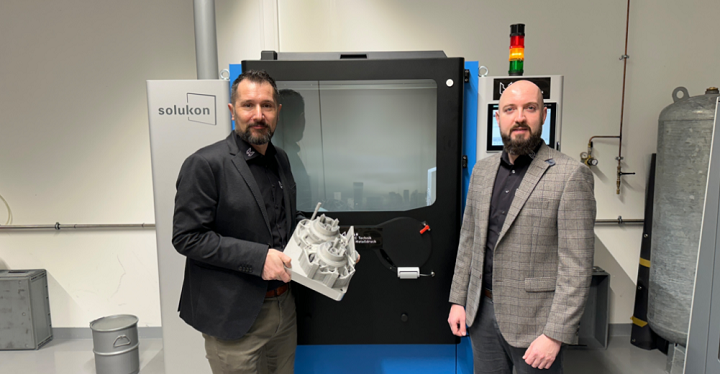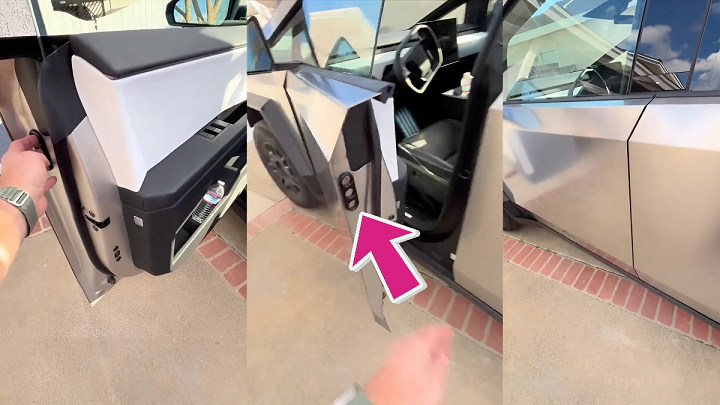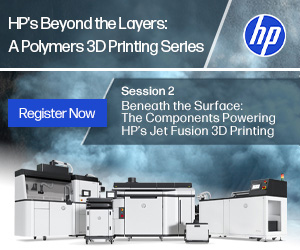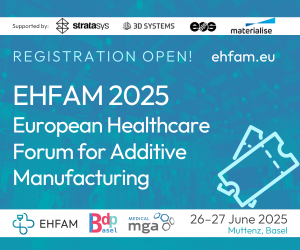In today’s 3D Printing News Briefs, ioTech’s digital manufacturing CLAD technology is opening up opportunities for microelectronics and additive manufacturing. Hexagon and Raytheon Technologies commercially released the Simufact Additive Process and Defect Analysis tool. In post-processing news, AMT launched a depowdering system for ‘non-industrial’ 3D printing users, and M&H uses one of Solukon’s depowdering solutions. Finally, one Tesla Cybertruck owner is using 3D printed door handles to keep the vehicle clean from fingerprints!
ioTech Showcased CLAD Technology at LOPEC 2024
At the recent LOPEC event for flexible, organic, and printed Electronics in Munich, Israeli company ioTech showcased its patented Continuous Laser Assisted Deposition (CLAD) technology, which is ushering in exciting design opportunities for microelectronics and additive manufacturing. CLAD is material-agnostic, compatible with any substrate material, and able to handle materials with high viscosity. It’s versatile enough to enable rapid prototyping and mass customization of any geometric shape, and the digital printer’s deposition rate is fast enough to match the high productivity requirements of semiconductor packaging and assembly plants. ioTech won the LOPEC Start-up Forum Award for Most Impactful Technology/Product in 2022, and at the 2024 event, it shared the technology’s potential for mass manufacturing applications in microelectronics, as well as miniaturization in semiconductor packaging.
“We are delighted to be exhibiting at LOPEC for the first time and be able to demonstrate how customers can increase production efficiencies, embrace a more agile manufacturing approach, and deliver “until-now-impossible-to-manufacture” designs, all in a sustainable manner,” said Hervé Javice, ioTech’s Co-Founder and CEO. “The possibilities of our technology are endless. ioTech’s CLAD technology has been validated by key players in the market and is attracting orders from industry leaders in microprocessors, µLED, defense, e-Mobility power devices and batteries.”
Commercial Release of Simufact Additive PDA Tool
In 2022, software technology company Hexagon partnered with defense giant Raytheon Technologies to develop a simulation tool for metal laser powder bed fusion (LPBF). The two have now commercially released the Simufact Additive Process and Defect Analysis (PDA) software tool. The tool was created by combining technologies from Hexagon’s Manufacturing Intelligence division and Raytheon’s Pratt and Whitney, and should help manufacturers of any experience level make better products more efficiently by predicting defects before the 3D printing process even starts. This will enable operators to evaluate the print outcome ahead of time and test different combinations of geometries, processes, and materials. PDA predicts thermal history and defects at the laser path and powder layer scale, and was specifically designed to predict lack of fusion, keyholding, surface roughness, and balling up risks.
“We’ve partnered with Raytheon Technologies to deliver an intuitive and accessible tool that will help engineers quickly predict and mitigate risks. The ability to evaluate full laser powder bed fusion (L-PBF) parts on the meso-scale will reduce the effort to achieve part certification and thereby support industrialisation of metal 3D printing,” Jeff Robertson, Hexagon’s Director of Global Business Development, said back in 2022.
PostPro DPX Depowdering System for Non-Industrial 3D Printing Users
Moving on from pre-printing to post-printing, AMT PostPro has launched a new depowdering system, called the PostPro DPX, for the non-industrial 3D printing market segment. The company just launched its PostPro SFX desktop chemical vapor smoothing system in October, and wanted to offer its customers who work with 3D printing on a smaller scale a more cost-effective depowdering machine. Said to be well-suited for environments that require safety, space efficiency, and high throughput, the new PostPro DPX would be good for industries such as jewelry, dental, and prototyping, who, as AMT explains, “rely on small scale and desktop printers for their detailed and high-quality printing needs.”
The compact PostPro DPX was designed for performance, ease of use, and safety, and has ATEX certification, in-built gloves for manual operation, and a basket volume of ten liters. Other advanced features include a powerful filtration system, and an ionization unit for static reduction, both of which are definitely important when you’re dealing with powder. The new system is priced at €15,995, and with its highly efficient post-processing and cleaning capabilities for smaller 3D printed parts, is meant to complement the desktop PostPro SFX. This will be especially helpful for those who use smaller SLS platforms, like Sintratec, Formlabs, and Sinterit. Plus, to help its customers achieve major savings while also enjoying “a comprehensive post-processing solution,” AMT is also offering a bundled deal of €35,995 for both the PostPro DPX depowdering system and PostPro SFX chemical vapor smoothing system.
M&H Using Solukon SFM-AT1000-S Depowdering System
Austrian 3D printing company M&H is setting new standards in cleaning and post-processing metal 3D printed components, and gaining a competitive advantage, with its use of the SFM-AT1000-S depowdering system by German quality manufacturer Solukon. This automatic powder removal system can handle large, heavy metal components weighing up to 800 kg, at a height of 1,000 mm, and is said to remove powder residue from within internal channels and cavities of complex parts with ease. The precision of the SFM-AT1000-S, which comes from its two endlessly rotating axes with servo drive and built-in, high-frequency knocker, is what made the system so attractive to M&H. The company uses it to clean and post-process parts particularly for the aerospace and international racing industries, and Formula 1 in particular.
“The ability to clean components with extreme precision enables us to meet the specific and stringent requirements of these industries, where precision and reliability are particularly crucial,” said Patrick Herzig, the CEO of M&H. “Using the SFM-AT1000-S from Solukon ensures that even the finest geometries can be reworked without compromising on quality.”
3D Printed Door Handles to Keep Tesla Cybertruck Fingerprint-Free
A few months ago, my husband and I bought a new dryer, and I try in vain to keep it clean—a nearly impossible task because the lint trap is on top, but I try anyway, because it’s still so shiny and new. The owners of the new Tesla Cybertruck are having a similar issue with the vehicle’s 30X cold-rolled exposed stainless steel exoskeleton. The Cybertruck, which supposedly handles like a sports car but is rugged enough for off-roading, has doors with no handles, because to add them would have meant cutting a hole in this exoskeleton, increasing the cost and compromising its durability. So to open the doors, the owners are constantly putting their fingers on the truck, which is, unfortunately, a magnet for fingerprints and hard to keep clean. They could wrap their Cybertrucks with clear paint protection films or vinyl, but this could cost thousands of dollars. But never fear, ingenuity and 3D printing are here!
One Cybertruck owner, who goes by ogdobber on Reddit, got creative in keeping the smudges off the doors. On his latest post, he showcased a 3D printed piece that he created to fix the fingerprint problem. The “door handle,” which features three circles for your fingers, bolts on the side panel of the Cybertruck doors. Then, you just put your three fingers in the handle to shut the door, instead of having to get your smudgy fingerprints all over the vehicle’s stainless steel exoskeleton. Problem solved! This is just the first iteration of the owner-designed, 3D printed Cybertruck door handle, but I’m certain other makers will step up to the challenge and create their own. You can see how this ingenious solution works in the video below:
📐 Genius! Anyone have a 3D printer? pic.twitter.com/M6xCSH8KQK
— Royce Young (@Royce_Young) March 6, 2024
Subscribe to Our Email Newsletter
Stay up-to-date on all the latest news from the 3D printing industry and receive information and offers from third party vendors.
Print Services
Upload your 3D Models and get them printed quickly and efficiently.
You May Also Like
Hyperion Robotics, UK National Grid to Use 3D Printing for Low-Carbon Substation Foundations
Hyperion Robotics, a Finnish provider of additive construction (AC) solutions specializing in low-carbon infrastructure projects, has partnered with UK utilities giant National Grid to test the use of 3D printed...
Ukrainian Researchers Partner with NSF, US Navy to Turn Debris Into New 3D Printed Buildings
Ukrainian researchers have started a project to try to turn waste from demolished buildings into new 3D printed ones. This is especially relevant in Ukraine, where tens of thousands of...
Verustruct’s Housing-Ready 3D Printing Tech and the Former SpaceX Engineer Behind It
Nick Callegari never planned on building houses. But after designing spacecraft parts at SpaceX, he decided to aim for something a little closer to home. The result is Verustruct, a...
RIC Robotics Teases Zyrex Giantroid Robot For Dreambuilding
RIC Robotics is teasing the Zyrex, what it calls a Giantroid. 6 meters in height with a 7 meter span, the autonomous (but human-monitored) construction robot is slated for release...


